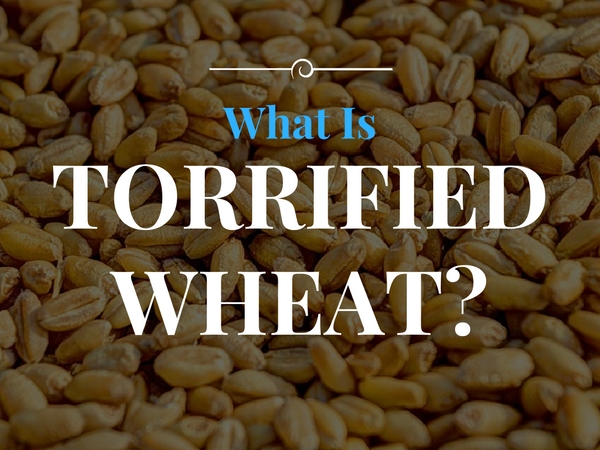Torrified Wheat. All The Questions You Never Asked, Answered
Looking through recipes for many British beers especially from older, regional breweries, you will notice that time and time again the same ingredient pops up in the grain bill. Torrified wheat. It is usually added in small percentages, especially in traditional English Ales and bitters. The reason for these small additions at the end of the grain bill is simple; head retention. How does it work, what is torrified wheat and how much do you need. That is what we are going to discover in the rest of this article.
Table of Contents
What Does “Torrified” mean?
Torrified wheat is an unmalted adjunct used in making beer.
Wheat as a cereal has been used in beer ever since it was first cultivated, so almost as old as civilisation. The term “torrified” refers to the process the wheat is treated with. Basically, you take wheat kernels and subject them to a high-temperature heat treatment that breaks down the cellular structure of the grain.
Wheat that hasn’t been torrified has starch that needs to be gelatinised before the brewer can extract fermentable sugars from it. The way to gelatinise the starch in wheat is to heat it up to over 85°C before mashing. The torrification process pre-gelatinises the starches in the wheat so that they are easily broken down at mash temperatures.
What is Torrified Wheat Used For?
When I first started home brewing, I had one book. The book was Graham Wheelers, Brew Your Own British Real Ale. Out of all the home brewing books I have on the bookshelf, this one, in particular, has by far the most recipes. This is I guess part of the reason for its popularity, all of the recipes in Brew Your Own are clones of commercial British Ales. Looking through all these recipes a fairly large proportion of them have torrified wheat in.
In most cases, the torrified wheat that goes into those beers is just to change the appearance of the beer. Whilst torrified wheat does have a unique, subtle flavour, the discerning cask ale drinker must ensure there is a suitable level of foam on top of his/her pint of beer.
Wheat has a much larger percentage of protein than barley and it is that protein that helps stabilise beer foam and add body to the beer.
Why Does Torrified Wheat Aid Head Retention?
The key thing that wheat brings to foam stability is a high protein content. Protein is known to aid foam qualities and whilst malted barley does contain some protein, wheat contains a larger percentage.
As mentioned previously, wheat on its own needs to be gelatinised before you can extract fermentable sugars. Whereas torrified wheat has already undergone pre-gelatinisation. This is why it is so convenient to add a small percentage of torrified wheat to the grist of whatever beer you are brewing in order to increase the froth forming compounds.
How much Torrified Wheat Should You Be Using?
If you are using it in an effort to promote head retention and increase the stability and body of a beer a good starting point is to use torrified wheat to make up between 5 – 10% of the grist which would be around a couple of handfuls in a 20 litre batch. I always shoot for around 8% and think this is around the right mark to get some nice lacing on the glass when drinking a beer.
I will point out though that torrified wheat can be used in larger quantities, most maltsters have a maximum figure of around 40% of the grist. Used in this kind of quantity instead of wheat malt you are in the territory of making beers like witbiers and german wheat beers.
Do take note that there are no enzymes in torrified wheat, you need to rely on the diastatic power of pale or lager malts to convert the starches in a mash, this is why you are limited to 40% of the grain bill.
Can You Steep Torrified Wheat?
No. Torrified wheat is only suitable for mashing and needs to be mashed with other malts that have enzymes to convert the starches into fermentable sugars.
As a general rule any malt or cereal that has unconverted starch, which is the case with torrified wheat, needs to be mashed. Check out a list of grains suitable for steeping here.
If you are an extract brewer wanting to promote head retention and formation in your beers then I would pick something like Carapils/Dextrin malt, which is suitable for steeping and provides the same benefits as wheat for this purpose.
Torrified Wheat Vs. Wheat Malt
What should you be using and when? This is really up to each individual brewer. The flavours are different and if used in any large quantity, such as when making a wheat beer I would use wheat malt as I prefer the flavour. It is necessary to use wheat malt when it makes up a large part of the grist because wheat malt has the enzymes required to convert it’s own starches whereas torrified wheat doesn’t.
If you want to have a small addition between 5 – 10% to aid head retention, either is suitable. I wouldn’t think twice about using either one or the other.
Do Girls Like Wheat?
Yes, they do!






Nice article with good historical information. I’ve found that torrified wheat does a better job for head retention than normal wheat malt and leaves much less of a noticeable wheat flavor. Also the pretty girl is walking through a barley field not wheat. 🙂
Thanks Matt. Torrified wheat is pretty common in the brewing industry in the UK. Good spot on the barley field!
That’s barley in the photo!